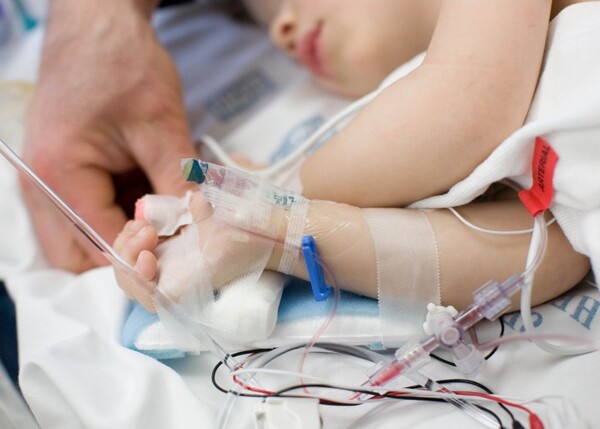A protracted government-doctor standoff over the policy to increase the medical school enrollment quota has also put pediatric clinics at the national university hospitals on red alert.
Most of these children's hospitals are appealing for support, saying they lack enough medical professionals to maintain normal operations.

Rep. Baek Seung-ah of the opposition Democratic Party of Korea (DPK), a member of the National Assembly's Education Committee, released the status of six children's hospitals operated by national university hospitals on Wednesday, emphasizing the need for the government's active support.
According to Rep. Baek, Pusan National University Hospital, Jeonbuk National University Hospital, and Chonnam National University Hospital have been struggling with a decrease in pediatricians at children's hospitals since the outbreak of the medical turmoil. Notably, Chonnam National University Hospital has entered into downscaling medical services.
Pusan National University Hospital complained of a shortage of pediatric emergency room personnel. Its children's hospital recently suspended pediatric respiratory care indefinitely because there was only one pediatric respiratory specialist, making it difficult to operate normally. The children's hospital said it needs at least three more pediatricians to avoid operational disruptions.
Jeonbuk National University Hospital said it is not considering reducing hospital services, including during the Chuseok (Korean Thanksgiving Day) holiday, but needs at least four more pediatricians to maintain its services.
Chonnam National University Hospital also wants four pediatricians to staff the emergency department of its children's hospital. The emergency department will not operate normally during the Chuseok holiday, and operating intensive care units and wards will be difficult. Without support, including replenishing more staff, the hospital must limit care to critically ill patients. The 45-bed NICU is already operating at a reduced capacity. There is only one neonatologist on duty.
Kangwon National University Hospital and Kyungpook National University Hospital said they have not reduced the number of pediatric specialists. Still, they need support to maintain their services. Kangwon National University Hospital needs six more pediatricians, and Kyungpook National University Hospital needs five more.
Seoul National University Hospital can operate normally without additional staff. Its children's hospital also continues adding pediatric specialists.
These hospitals said that as trainee doctors left, the remaining staff’s workload increased, including on-call duty in wards and intensive care units. Even military doctors and public doctors come to their aid, but the hospitals find it difficult to get them to work nights and holidays, stressing that they need specialized medical personnel, especially pediatric emergency specialists.
They also called for comprehensive measures to improve the working environment and operation of pediatric hospitals, especially as the accumulated deficit of children's hospitals continues to grow, which could lead to the collapse of essential and regional pediatric care.
“Strengthening the public nature of essential and regional healthcare is the state's responsibility. The government should take active measures to ensure that children's hospitals can operate normally, especially during the Chuseok holidays, so that the medical crisis caused by the reckless increase in the medical school enrollment quota does not worsen,” Rep. Baek said.
Baek added that bold investments are also needed to improve the medical conditions and treatment of children's hospitals, which have a relatively high work intensity, Baek added.
Related articles
- Medical student enrollment plummets to 3.3% nationwide for 2nd semester of 2024
- Triplets born at 22 weeks discharged healthy after intensive NICU treatment in Seoul
- [Interview] ‘Pediatric care will revive, so don't give up and stay with us’
- Pediatric care in crisis as tertiary hospitals struggle to treat critically ill children

